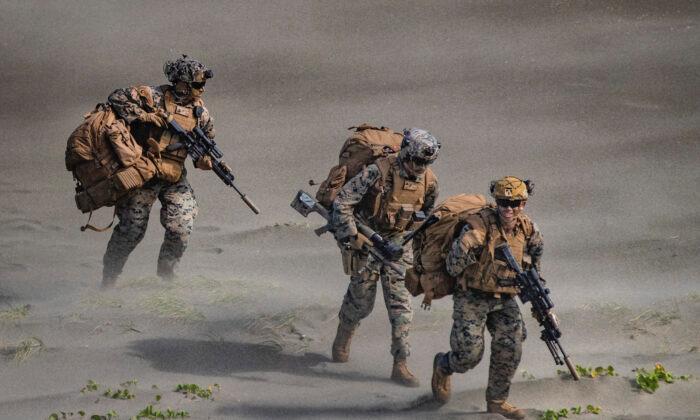The United States and the Philippines will stage their largest joint military exercise next month, with over 17,000 troops participating, amid growing concerns over Beijing’s increased military assertiveness in the region.
The annual Balikatan drill will take place from April 11–28 in Northern Luzon, Palawan, and Antique, Armed Forces of the Philippines (AFP) Balikatan spokesperson Col. Michael Logico said on Tuesday.
Logico said the upcoming Balikatan drill “is officially the largest” to date, as it will involve about 17,600 troops from both sides, including 12,000 American troops and several hundred soldiers from Australia.
The drill aims to bolster the U.S.–Philippines maritime defense and will include live-fire exercises in water for the first time, he added. Australian troops will take part in smaller land-based exercises.
The two allies also launched their Salaknib army-to-army joint exercise on Monday, with over 3,000 troops from both sides. The drill will run for three weeks at the Philippines’ Fort Magsaysay military base.
Lt. Gen. Romeo Brawner, chief of the Philippine Army, said the Salaknib will include live-fire exercises and artillery and mortar drills to bolster the Philippines’ defense against “potential foreign aggressors.”
“Since this is an army-to-army exercise, we will focus on defense operations such as air defense and also our defense from the shorelines,” Brawner told reporters.
The Philippines has been working to increase its military presence in the South China Sea amid Beijing’s repeated incursions into its territorial waters.
Beijing claims much of the South China Sea based on its so-called “nine-dash line” and has been aggressively enforcing its claim by stationing coast guard vessels and imposing fishing bans.
US Access to Philippine Military Bases
Last month, the Philippines and the United States struck a deal to grant American forces access to four new military bases in the Philippines on top of the five bases already granted under the Enhanced Defense Cooperation Agreement (EDCA).Philippine Defense Secretary Carlito Galvez said the purpose of EDCA projects are meant to boost defense capabilities against external threats, given the increasingly “precarious” geopolitical situation.
“We are not preparing for war; rather, we are aiming to develop our defense capabilities against eventualities and threats to our security,” Galvez said on March 2.
The Philippine government has not yet publicly specified the new locations.
In response, the Chinese Embassy warned the Philippines against expanding U.S. access to Philippine military bases, claiming that doing so would embroil the Southeast Asian nation into “geopolitical strife.”
The Chinese communist regime accused the United States of attempting to “encircle and contain China” through its military alliance with the Philippines.
“To bundle the Philippines into the chariots of geopolitical strife will seriously harm Philippine national interests and endanger regional peace and stability,” the Chinese Embassy said in a statement on Sunday.
The Philippines and the United States are allies under the 1951 Mutual Defense Treaty, which dictates that the two nations will defend each other if either is attacked.
“We conduct more than 500 defense engagements together every year,” he told a joint press briefing. “And as President [Joe] Biden has made clear, America’s commitment to the defense of the Philippines is ironclad.”





